Differentiation in the Digital Classroom: AI Will Deliver Personalised Learning Like Never Before
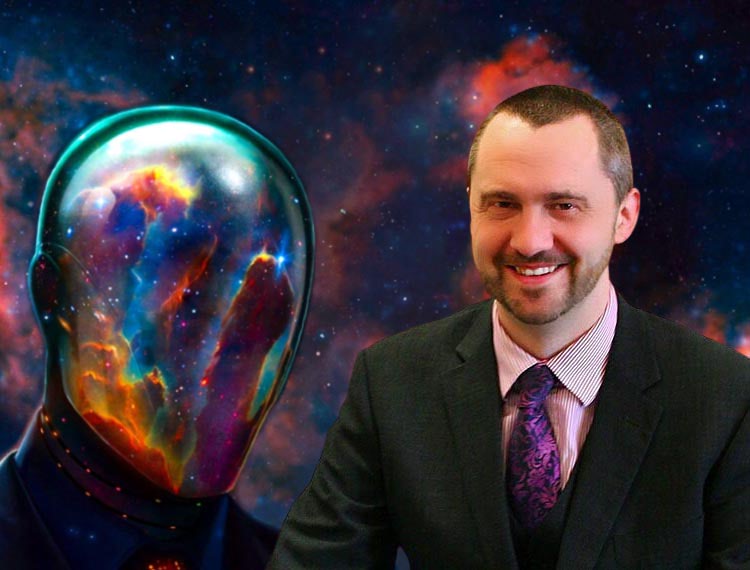
My workload has really gone down, said no teacher ever. Having spent my entire life either in or around education it seems that in many cases the resources have consistently declined in real terms whilst the workloads have increased making continual innovation mandatory.
To address this challenge my contention is that artificial intelligence (AI) perhaps more than any other tool may prove to be our greatest asset in the digital classrooms of the future.
It’s about time.
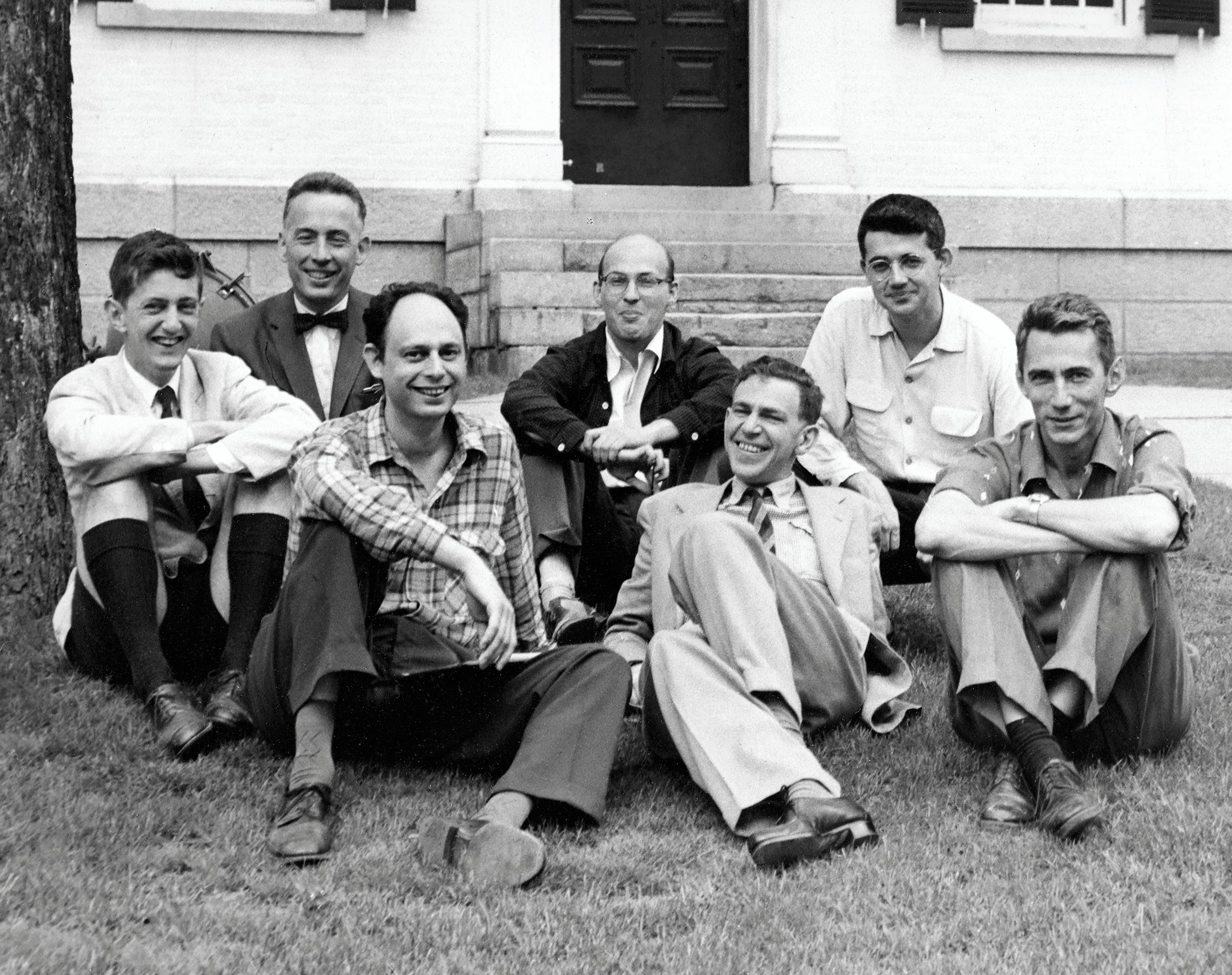
Artificial intelligence, or intelligence demonstrated by machines rather than natural intelligence displayed by humans, was a term most attributed in origin to a workshop that took place at Dartmouth College in the US back in 1956.
The attendees at that workshop would go on to be regarded as the original leaders of AI for research.
They predicted at the time that machines as intelligent as humans would exist within a modest timeline and millions of dollars of investment was poured into their work.
As is often the case with technology evangelists their ambition was a little beyond what could be delivered at that time, but zoom forward to the present day and it’s a very different story.
What started at Dartmouth College back in the 1950s is now about to have it’s Netflix moment for education as artificial intelligence becomes the tool for our time.
The scale of positive impact the application of AI can have
In an article published by McKinsey’s titled ‘How Artificial Intelligence Will Impact K-12 Teachers’ authors Jake Bryant and Saurabh Sanghvi reveal the scale of positive impact the application of AI can have not just in terms of saving teachers time but also how this time can be reallocated to what teachers care about, namely learning.
In a recent survey conducted in partnership with Microsoft the authors of this paper reveal that teachers are on average working 50 hours a week and note that according to the Organisation for Economic Co-operation and Development this figure has been increasing by more than 3% over the most recent five year period with every indication that this trend may continue.
In all of my time in education I am yet to meet a teacher who went into the profession to spend their evening preparing work or marking assignments or preparing documents for an industry of bureaucracy. The sheer increase in workloads over recent years is leading to unprecedented health related issues among educators in terms of workplace stress.
In her recent article, ‘We need an end to the toxic work-all-hours culture’ Emma Shephard comments that working all hours of the day makes no sense.
Indeed it doesn’t, and it isn’t productive either as other studies such as one by University College London (UCL) noting that for every additional hour that teachers spend marking there is a causal link to a decline in their wellbeing at work. This trend is having serious implications.
As Bryant and Sanghvi point out, teacher turnover in the US now tops 16% per annum whilst in the UK the situation is far worse with 81% of teachers reporting that they are considering leaving the profession due to their workloads.
This isn’t just an issue for the education sector, it’s an issue for every sector not least because as someone once said the future of all professions is in the classroom today, and the evidence suggests we need teachers more than ever before.
The McKinsey Global Institute Report suggested that demand for teachers in the UK will grow from 5% to 24% in the US up to 2030 whilst countries like China and India project demand for teachers to increase by more than 100%.
To meet these challenges of increasing workloads and supply side shortages in teaching artificial intelligence offers some hope.
Let’s get the Terminator reference out of the way upfront. In any conversation about AI it is typical to hear concerns of how robots may pose a threat to our way of life either by replacing jobs or by ultimately causing the end of the world.
The evidence would suggest that both are largely untrue (recognising the jury remains out on the latter). Throughout history technology enabled innovation has largely created far more job opportunities than it replaced. In regard to scenarios of killer robots whilst its great subject matter for movies in reality AI is likely to have far more mundane but useful applications.
We can see this already in our daily lives, you’ve just probably not noticed it. AI can help us to be more efficient by doing things we don’t want to because it’s not the best use of our time or skills, or maybe both. Emails are a great example of this.
The AI in GMail now auto-completes something in the region of 30-40% of the emails I write, or to put it another way I can get through my Monday morning backlog of emails in nearly half the time it used to take me (the same AI also keeps me safe and filters out nearly all the crap I don’t have time for). This is just the beginning.
The research by McKinsey suggests that between 20-40% of teacher time is currently spent on activities that could be automated using technology we have today. Broadly speaking, that translates to around 13 hours per week that teaching staff could redirect to learning based activities such as supporting students to achieve higher learning outcomes.
Perhaps the most powerful impact AI will have on education is to enable teaching staff to spend more time focused on learning and to enable teachers to have the freedom to teach in new ways.
The McKinsey research surveyed more than 2000 teachers in Canada, Singapore, the UK and the USA and asked how much time they spend on 37 core activities.
In summary, the areas where the most potential for AI enabled automation exists were deemed to be:
- Preparation
- Administration
- Evaluation
- Feedback.
The findings are below:
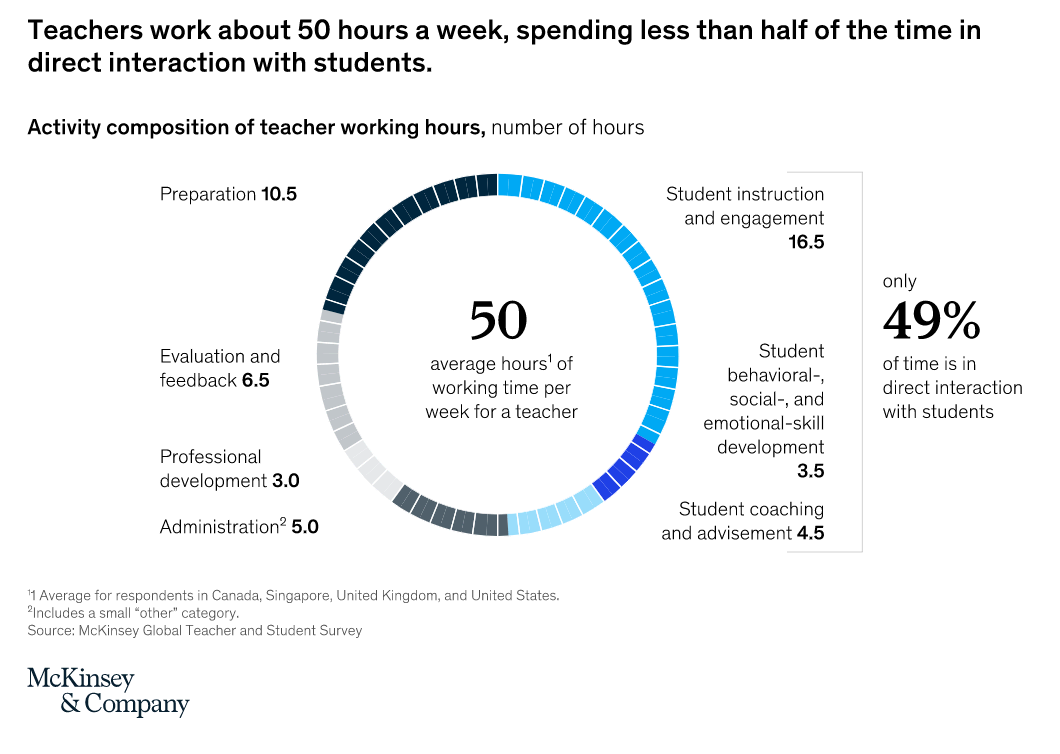
My contention is that this is just the beginning.
AI will enable far more than efficiency and saving teachers time, although that in itself is great. I believe that we will soon see how AI can enable teachers to orchestrate the classroom in new ways by enabling the teacher to have the freedom to use existing technologies in learning spaces in new ways that mean the teacher is no longer tethered to the front of the learning space.
Too often physical teaching spaces have largely remained unchanged, as English writer, speaker and Artificial Intelligence commentator Calum Chace has noted:
“Classrooms today would be recognisable to the Victorians who invented them. A few decades from now we may look back on this period as the final years of the pedagogical dark ages.”
Indeed I believe we will, and I believe this because of what I see happening in homes all over the world as the internet of things became a reality.
Even just five years ago I would not have expected to be talking to a number of devices in my home. Now nearly every room in my house has a voice activated and AI enabled device automating things for me, from asking for a set playlist for a workout (ok that would actually be my daughter but you get the point) to requesting answers to specific questions or holding a family quiz night, all whilst enabling everyone in the home to move around as normal without being tethered to a device. In the years ahead my contention is that the classroom of connected things is about to arrive and with it teachers will be liberated to use learning spaces in new ways currently not possible.
The combination of automated processes with voice enabled AI devices will be a game changer for our world of learning over the coming years.
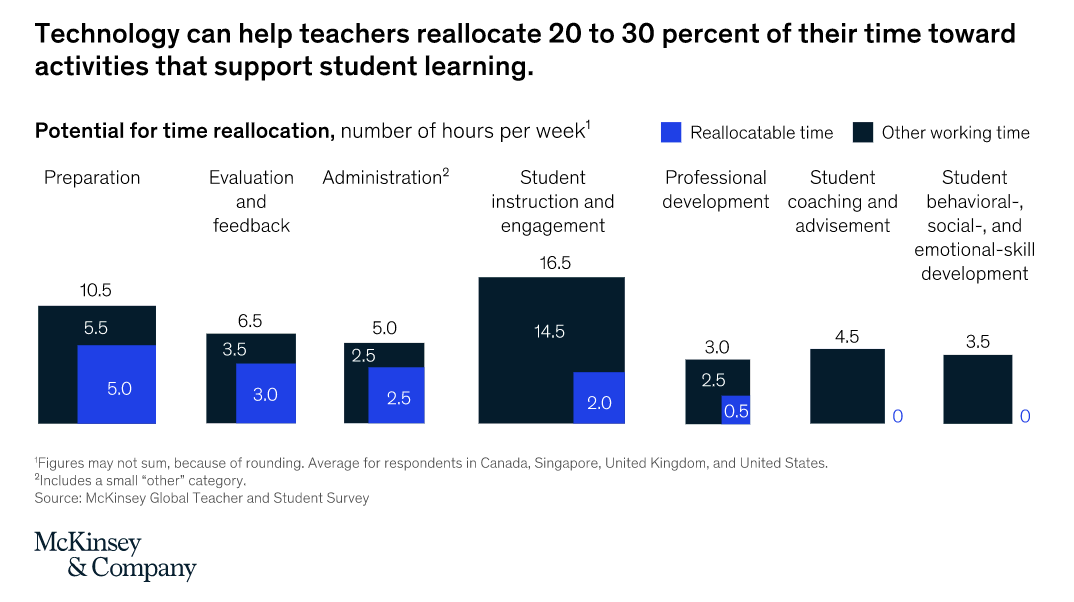
The automated age.
Whilst the automation of tasks often leads to sensational headlines of job losses the reality is very different. Artificial intelligence and automation (whether through robots or intelligent processes) will take away many of the tasks that aren’t the best use of our time.
 Sabine Hauert, Co-founder of Robohub.org, says:
Sabine Hauert, Co-founder of Robohub.org, says:
“Robots are not going to replace humans, they are going to make their jobs much more humane. Difficult, demeaning, demanding, dangerous, dull – these are the jobs robots will be taking.”
In the article ‘AI Applications in Education’ in Forbes the author Ron Schmelzer notes how throughout the whole of the education ecosystem learning is being transformed by intelligent systems that are helping people to better achieve their learning goals.
One of the ways this is happening is through extreme personalisation enabled by AI where highly customised learning pathways are tailored to the learner and their profile. This is exciting for all those who have seen the negative consequences of a standardised approach to learning.
Schmelzer notes that by 2024 it is expected that upwards of 47% of learning management tools will be enabled by AI in some form. The implications are significant.
Rather than a standardised curriculum we will increasingly see the learning process augmented through digital learning assistants creating personalised pathways that enhance learning outcomes because the learning will resonate more at the individual level.
Great news if you need to move to think.
Untethered teaching will be one of the big wins for classrooms augmented by AI. As long as most people can remember teachers have often been tethered to equipment in a fixed location in teaching spaces (the more progressive places may have a clicker but then who stole the batteries?).
Yet AI has the potential to liberate teachers to use learning spaces differently. If you imagine having a digital learning support assistant in the teaching space who is able to augment the teacher without the need for an actual additional person, you can start to imagine the potential of what is to come.
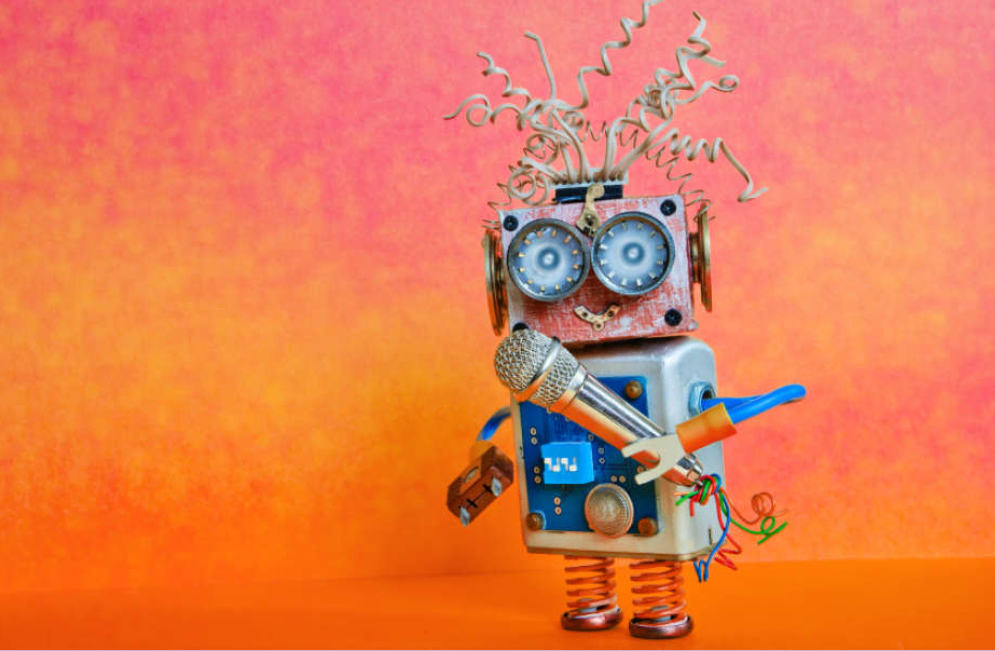
 Executive Chairman of IBM, Ginni Rometty has said:
Executive Chairman of IBM, Ginni Rometty has said:
“Some people call this artificial intelligence, but the reality is this technology will enhance us. So instead of artificial intelligence, I think we’ll augment our intelligence” and looking at how we learn it’s clear that AI has the potential to augment our abilities in so many ways.
In the article ‘The Impact of AI on Education’ via Behavioural Signals the authors note that teachers who adopt a more collaborative approach to AI tools designed for learning are finding that such tools can enable differentiation not just on academic performance but by emotional state, confidence levels and more. Additionally they can do so at a speed and breadth that a person by themselves could never achieve.
My contention is that it will be the application of AI that delivers the most freedom to educators to focus on personalised learning experiences that will transform education on the road ahead rather than any attempt to try to do more of the same. We need to reimagine education in light of the emerging technologies at our disposal.
AI will never replace a teacher, but it can augment learning in ways that open up a world of exciting possibilities for personalised learning that is differentiated at a forensic level and in ways not previously possible. Additionally in the classroom of the future the technology in the learning spaces will be more integrated and less reliant on the physical interaction of the teacher to support learning.
This is because one of the most significant developments where AI is impacting on our world is through voice activated AI, hence it’s predicted by Juniper Research that more than 50% of all searches online will be activated by voice alone and this opportunity is to create a $19 billion industry by 2022.
A final thought. In the connected classroom of the future where AI enabled devices can be activated by voice alone the opportunities for equity of access to teaching are transformed for many with mobility issues. This vision isn’t science fiction, it’s happening now.
In the decade ahead my contention is that those educators who embrace applications that embed AI to augment learning will benefit from more time for both themselves, and their students, and despite the increasing demands of their profession will be able to both deliver better learning outcomes at the same time as better preparing their students for the agile, automated digital world we are in.
Jamie E Smith, Executive Chairman, C-Learning











Responses